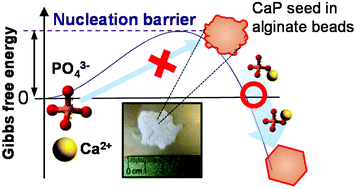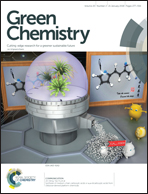Designing the crystalline structure of calcium phosphate seed minerals in organic templates for sustainable phosphorus management†
Abstract
Global phosphorus (P) should be managed more sustainably to secure food, energy, and water for a growing population. Despite the abundance of calcium in most environments, we have not fully utilized its thermodynamic stability to form calcium phosphate minerals (CaP) for aqueous P management. In this study, we showed that the energy barriers to CaP nucleation can be reduced by seeding reactive CaP nuclei in calcium alginate beads. The CaP nucleation kinetics enhanced by seeds effectively immobilized aqueous P into the macroscale beads, which can be reused as a slow-release fertilizer. Given that more developed CaP crystalline seeds have a lower solubility than does an amorphous structure, equilibrium P concentration was regulated successfully by the seed crystallinity during both the removal and release processes. A simultaneous seed nucleation during alginate gelation enabled control of the degree of the seeds’ crystallization without using any hazardous substance or additional energy input. Poorly crystalline hydroxyapatite CaP seeds effectively decreased aqueous P concentration from 200 to 22.7 μM within one day at a final pH 7.2 (96.4 mg P g−1 dry seed). After P recovery, the beads were moved to a P-deficient environment to be evaluated as a slow-release fertilizer. Utilizing the thermodynamic stability of CaP at neutral pH, this approach highlights a potential application of naturally abundant biomaterials for sustainable P management.



 Please wait while we load your content...
Please wait while we load your content...